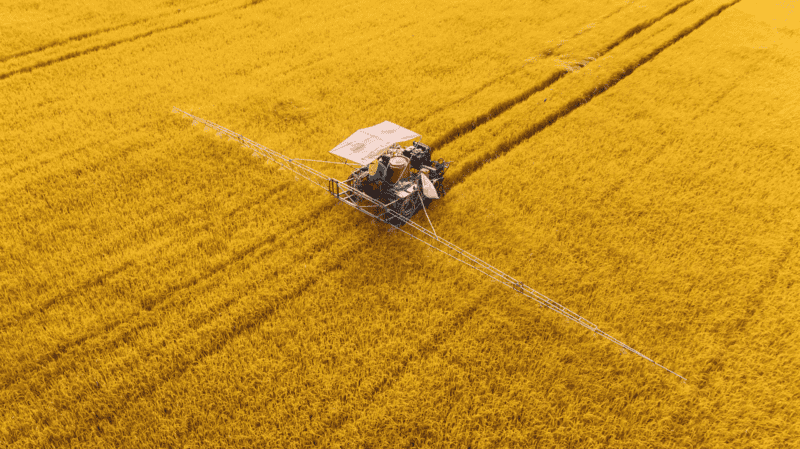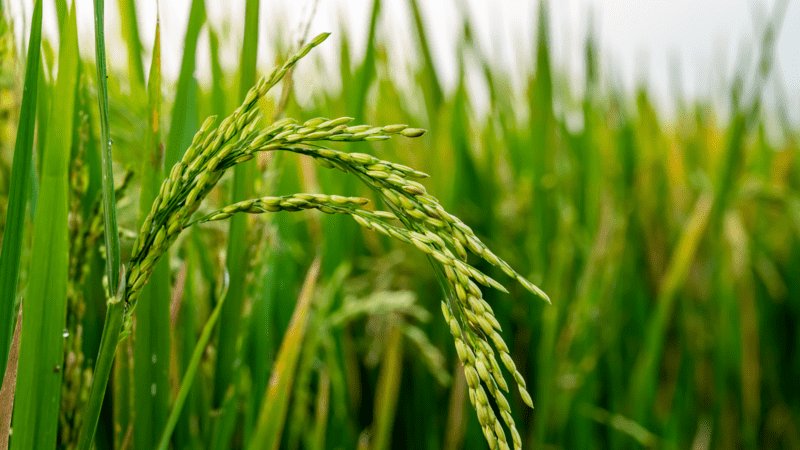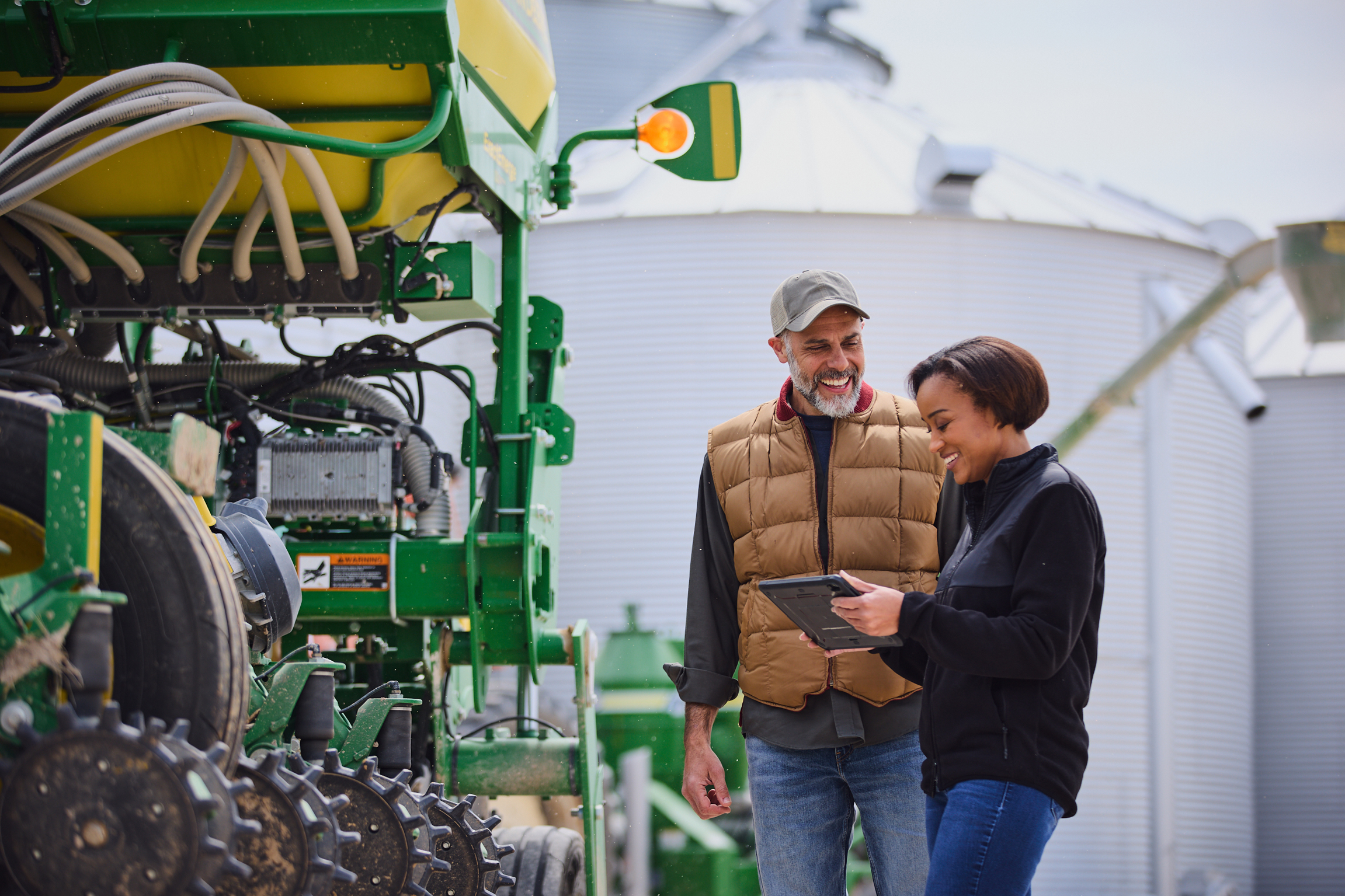Soil carbon controversy: Unfounded concerns or healthy skepticism?

Soil carbon credits have been gaining popularity in the US voluntary carbon market and Australia's compliance-based market, but there are numerous critics of this type of carbon credit. Soil carbon credits are generated through projects that enhance soil carbon sequestration, or the process of plants removing CO2 from the atmosphere and storing it below ground through various biological and chemical processes.
By implementing sustainable management practices, such as reduced tillage or cover cropping, agricultural land managers can increase the amount of stored carbon and generate credits for it. However, there are many skeptics of soil carbon credits due to credit quality concerns, inconsistent standards for calculating the change in soil carbon stocks and issues of additionality and permanence.
More broadly, nature-based carbon credits, particularly avoidance credits, have recently come under scrutiny. The Guardian newspaper published an article in January claiming that 90% of REDD+ deforestation projects certified under Verra, the world's largest voluntary carbon crediting standard, did not represent real emissions reductions. The UK-based newspaper's investigation was done in collaboration with Die Zeit and SourceMaterial and was based on peer-reviewed studies from 2020, 2022 and 2023, one of which was unpublished. Verra disputed the article's findings and released a technical review of the articles cited Jan. 31, stating that two of the three studies used were "patently unreliable" and "contain multiple serious methodological deficiencies."
There is no one agreed-upon standard for crediting soil carbon projects as each of the major standards follows a similar yet slightly different methodology for quantifying changes in soil carbon from such projects.
The main components of quantifying soil carbon projects include aligning with applicability criteria, determining baseline and project soil carbon estimates and projections, estimating greenhouse gas emissions, calculating potential leakage, establishing additionality of projects and developing a monitoring plan. The specific protocols for each of these steps vary between standards, which can cause differing quality of credits.
A study done by the Environmental Defense Fund, or EDF, and the Woodwell Climate Research Center reviewed 12 soil carbon quantification protocols and found that the differences between the standards could limit the ability to compare soil carbon credits and ensure that emissions reductions actually occurred.
The Integrity Council for the Voluntary Carbon Market released March 30 its finalized Core Carbon Principles, or CCPs, which outline the fundamental characteristics of high-quality carbon credits. The ICVCM expects crediting programs to begin using CCP-labels by the end of 2023.
The CCP label will be based on climate, environmental and social factors. This initiative represents one approach to determining the quality of each type of credit and crediting program, making maneuvering the market a simpler process for buyers.
"Building a widely shared understanding of what high integrity means for carbon crediting programs and categories of carbon credits is a pre-condition for the development and growth of a viable and vibrant VCM," Annette Nazareth, chair of the Integrity Council, said in a statement March 30.
"The CCPs and program-level criteria we are issuing today are an important step towards a transparent, regulated-like market where buyers can easily identify and price carbon credits that meet consistently high-integrity standards that will also increase ambition over time," Nazareth said.
This initiative will enhance the integrity and credibility of different types of carbon credits and standards, while increasing demand and prices for carbon offsets, David Antonioli, CEO of Verra, said in an interview with S&P Global Commodity Insights earlier this year.
A major point of contention for soil carbon projects is how exactly the changes in soil carbon stocks are measured, reported and verified. Under the major methodologies, notably Verra and the Gold Standard, soil carbon quantification can be done by direct sampling, models, calculations or a combination of sampling and modeling.
Skeptics of soil carbon projects say there are problems with each of these methods. A common argument is that soil sampling should be done over modeling or calculations to verify changes in soil carbon stocks. Calculations and modeling are often thought to not be as robust as measuring and remeasuring as the lack of soil sampling limits the integrity and proper verification of emissions reduction.
"There is no sufficient field data to rely on a model at this point. I expect it will take more than 10 years before we will have any confidence in models," Louise Edmonds, CEO and founder of Australia-based project developer Carbon Sync, told S&P Global Commodity Insights via email Jan. 30.
According to the EDF's report, "little evidence suggests that existing models can accurately capture soil organic carbon change at the field level under all proposed management interventions for all combinations of soils and climate."
However, soil sampling has its own challenges due to the enormous spatial variability of soils on a landscape. Different soil structures and textures can significantly impact the amount of carbon stored and the accuracy of sampling only a subset of fields. Furthermore, changes in soil organic matter can take years to realize, so sampling alone does not enable farmers to get a return on their investment in soil carbon projects for several years. In Australia, it takes approximately five years of project implementation before a project begins generating credits, Edmonds said.
"We're taking a hybrid approach of both soil sampling and modeling. If we were just soil sampling, we would want to wait at least five years or so between samples to really separate the signal from the noise," Max DuBuisson, head of sustainability policy and engagement at Indigo Ag, a US-based project developer, said in an interview with S&P Global earlier this year.
A key challenge for soil carbon projects is demonstrating additionality or showing that the storage of carbon wouldn't have happened under business-as-usual scenarios. This requirement of carbon projects limits carbon farming to farmers that have yet to implement sustainable practices. Farmers who have already adopted these practices cannot benefit from participating in the carbon market.
Permanence is also a contentious issue when discussing soil carbon credits. There are varying findings in academic literature surrounding exactly how long carbon is stored in soil.
One way that carbon is released back into the atmosphere is via the respiration of soil microorganisms, which is a key pathway for carbon release in the natural carbon cycle. Additionally, as around 40% or 353.8 million acres of all US farmland is rented or leased, according to the US Department of Agriculture Economic Research Service, changes in the tenure of land can reverse the increased storage of carbon in the soil from regenerative practices due to shifts in management.

News
India's wheat stocks in state-run inventories depleted to a 16-year low as the central government sold record quantities to augment domestic supplies and rein in rising prices amid poor crop yields during two previous seasons. Wheat stocks in government warehouses were at 7.5 million mt at the start of April, down from 8.4 million mt a year ago, an official at the Food Corporation of India told S&P Global Commodity Insights. Over the past decade, wheat stocks on April 1 averaged 16.7 million mt. Despite the sharp fall in stocks, the government was able to meet the buffer and strategic reserve norms that mandate holding wheat stocks at or above 7.46 million mt April 1. The government has planned to aggressively acquire wheat to replenish its stocks at state-run warehouses. The government plans to procure around 33.5 million mt wheat produced in marketing year 2024-25 (April-March), nearly 28% higher than the actual procurement of 26.2 million mt a year prior. India could not reach its wheat procurement target in MY 2022-23 and MY 2023-24, as heat waves weighed on the crop size. However, the pace of procurement has slowed over the past week as recent showers in key wheat producing states have delayed harvest operations, traders said. The government has pegged India's wheat output in crop year 2023-24 (July-June) at 112 million mt, slightly higher than the 110.55 million mt harvested in the previous season. However, an S&P Global Commodity Insights survey of 13 analysts and traders found India's wheat harvest in MY 2023-24 is likely slightly lower year on year, at 107 million-108 million mt. Recently, it has ordered mandatory declaration of wheat stocks available with traders, private warehouses, retailers and processors on a government-managed portal effective April 1 and every Friday thereafter, in a bid to ensure availability and prevent hoarding. Record sales The country has delved into state reserves to sell wheat to bulk consumers, as millers to try to curb domestic prices that have been above the state-fixed minimum buying price since the last crop was harvested. India has also provided repeated extensions to the scheme of distribution of free food grains to over 810 million beneficiaries under the Pradhan Mantri Garib Kalyan Anna Yojana for five years effective Jan. 1, 2024, has dampened the prospects for wheat and non-basmati rice exports in 2024. The move is aimed at ensuring food security to the beneficiaries, according to a government statement. The scheme, which was set to end this December, has been extended amid ongoing state assembly polls and upcoming general elections next year. However, if the government misses its procurement target, it may have to look for cheap imports or reduce import duty on the grain to ensure adequate domestic supplies. Despite the tight supply, it has been resisting calls to reduce or remove the 40% import duty on wheat. The government is also likely to extend export restrictions on wheat until March 2025. India banned wheat exports in May 2022, after domestic supplies tightened amid a drop in output. In marketing year 2022-23 (April-March), India planned to export nearly 10 million mt of wheat but ended up shipping nearly 5 million mt. Geopolitical tensions Benchmark grain, oilseed and vegetable oil futures rose overnight in the US and during morning trade in Asia April 19, reversing a bearish streak, after Israel launched a retaliatory missile attack on Iran, fueling fears of an escalating conflict in the Middle East. Any potential supply bottlenecks may spur a rise in export prices of wheat from Black Sea origin, traders said. The most active July soft red winter wheat contract on the Chicago Board of Trade rose 2.6% from the previous close to $5.675/bushel at 0320 GMT. As of 1640 GMT, the contract was trading at $5.62/bushel, up 1.67% from the previous close. In the EU, the Euronext milling wheat contract for May was up 0.4% from the previous close at Eur206.50/mt ($219.88) as of 1640 GMT. Platts, part of S&P Global Commodity Insights, assessed EU 11.5% wheat FOB CVB at $213.25/mt April 18, up $1/mt on the day.

News
Bayer AG has announced the pilot of an expert generative AI (GenAI) system that “quickly and accurately” answers questions related to agronomy, farm management and Bayer agricultural products. The pilot has been developed in collaboration with Microsoft as leading technology partner and Ernst & Young (EY) as an industry partner, the company said. The system is the result of Bayer using proprietary agronomic data to train a large language model (LLM) with years of internal data, insights from thousands of trials within its vast testing network and centuries of aggregated experience from Bayer agronomists around the world, the company said. “Our unique GenAI system has the potential to serve agronomists and benefit farmers all over the world, further advancing AI as an indispensable technology for agriculture,” said Amanda McClerren, CIO and head of digital transformation & information technology for Bayer’s crop science division. Bayer said it is exploring ways to integrate the expert GenAI system into its digital offerings, and the company anticipates broad opportunities for collaboration with other agricultural offerings and partners. “Bayer aims to expand the pilot of the expert GenAI system to selected agronomists and potentially farmers as early as this year, while continuing to advance a separate GenAI prototype allowing users to directly query their own farm data,” the company said. In addition, the partnership between Bayer and Microsoft enables the company to bring ready-made capabilities, AgPowered Services, to the agri-food industry, such as Bayer’s Historical Weather that brings a comprehensive weather dataset to Azure Data Manager for Agriculture that spans the last 40 years and provides detailed, field-level weather insights across global agricultural regions, the company said. Integrating tools from IBM, including from the IBM Environmental Intelligence Suite, the new capability, which was previously available for internal use only, can inform weather risk assessments and actuary processes, Bayer said. It will also be used by Bayer and others to forecast crop seasonality and production changes year over year, as well as train agronomic models, it said. Meanwhile, Bayer is developing a connector that enables access to irrigation data from Lindsay Corp., an industry-leading irrigation solution provider. This expands the data types available to Azure Data Manager's enterprise customers, making it possible for them to connect to irrigation data in the same way as weather, imagery, original equipment manufacturer (OEM) and other data types, the company said. The new cloud offerings will also support regulatory and sustainability reporting, such as providing supply chain traceability that can help ensure compliance with new laws such as the EU Deforestation Regulation, which is expected to go into effect at the end of 2024, Bayer said. This article was first published in chemweek.com. Photo credit: Bayer